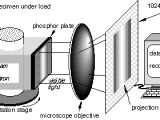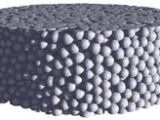A unique 3-dimensional microscope that works in a new way is giving unprecedented insight into microscopic internal structure and chemical composition. It is revealing how materials are affected, over time, by changes in temperature, humidity, weight load and other conditions.
Like a number of other microscopes, the new microscope harnesses X-rays to provide information about an object's internal structure down to micron (a millionth of a meter) scale. What makes it unique, however, is its innovative use of a technique called 'time delay integration', which enables it to generate much better images of larger objects than any other device. This allows not only to see small objects but also to understand the microscopic structure with greater accuracy.
X-ray microscopes can produce 3D internal pictures of an object by taking a large number of 2D images from different angles. However, the new microscope's combining of this technique with time delay integration is completely unique. Through averaging out imperfections in the image across all pixels, this approach enables the microscope to produce clearer and bigger pictures than previously possible.
"As well as developing these microscopes to study subtle variations in internal structure, a main aim of ours is to work with the wider scientific community to identify problems where they could make a real contribution," said Professor Jim Elliott of Queen Mary, University of London who led the project. "There's no limit to what it would be useful or interesting to look at."
The device could lead to advances in a range of areas, such as healthcare (allowing the study of how bone and tooth tissue behave in conditions such as osteoporosis, osteoarthritis and tooth decay), the development of better construction materials (by investigating the mechanical behavior of metals at a microscopic level), improved oil extraction methods (by observing how crude oil is held in sandstone pores) and even the study of fossils embedded in rocks without having to remove and risk damaging them.

 14 DAY TRIAL //
14 DAY TRIAL // 

